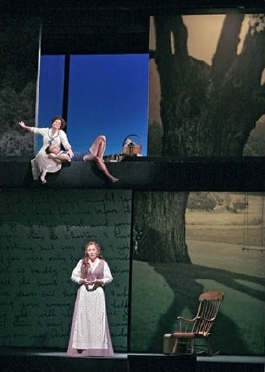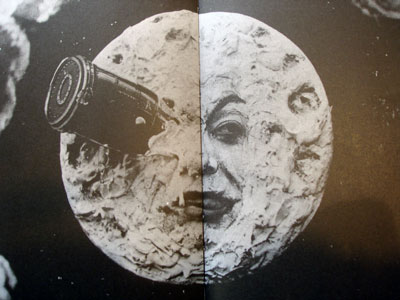It was as I suspected: lackluster piano scores can be camouflaged by bumptious orchestration.
Of course, one thing we’re looking at is that an orchestral score is not a piano score. A piano sonata, one by Scarlatti, say, is effective because it’s conceived for the sonorities of the piano. (Well, if Scarlatti wrote for the piano. Did he? Or was he a harpsichord/clavicembalo kind of guy?) Expanding the piano sonata to be played by an orchestra is a fruitless kind of excercise, because the sound-world created by an orchestra is not one inhabited by the sonata, i.e., piano sonatas do not scale up.
Likewise, orchestral pieces do not scale down. We will encounter this problem when we start working on William Blake’s Inn for real, because Milky Way, for example, is unplayable on the piano; I wrote it for the orchestra from the very beginning. Similarly, Man in the Marmalade Hat was never written for the piano alone (unlike most of the other early pieces); it has always required an unrealistic battery of percussion.
So yes, I’m being too picky to accuse myself of cheating through whiz-bang orchestration. Perhaps it’s an indicator that I’m starting to think in orchestral terms, which is problematic, because when will I ever have an orchestra at my disposal?
Another issue I’m having with the sunflower waltz is that it begins sweetly enough, a nice little accelerando poco a poco that gives us time for the sunflowers to nod to each other, wake up, establish themselves as “persons.” But it rapidly becomes this huge waltz, a glorious corps de ballet moment, and it doesn’t seem to want to back down. I made notes last night during intermission of Don’t Hug Me at NTC , Note to Laurel and Lamar: darlings, I love you, but that was an execrable waste of your brilliant talent, time, and the company’s money. I was in pain the entire evening, notes to back off the second climax and pull the thing back to a “Skater’s Waltz” kind of level, more in keeping with a small troupe of sunflowers.
But when I got home and listened to it again, that second climax did not want to be pulled back. So maybe we’re going to have a big, Tchaikovskian moment whether we want one or not. Oh well, if we get it into the studio and don’t like it, I’ll just write another one.
Now that I have Finale back up and running, it occurs to me that I still need to orchestrate Man in the Marmalade Hat and Make Way. Are those the only two I have left? [update: Heavens, no, there is also The Tale of the Tailor. ::deflating::]

